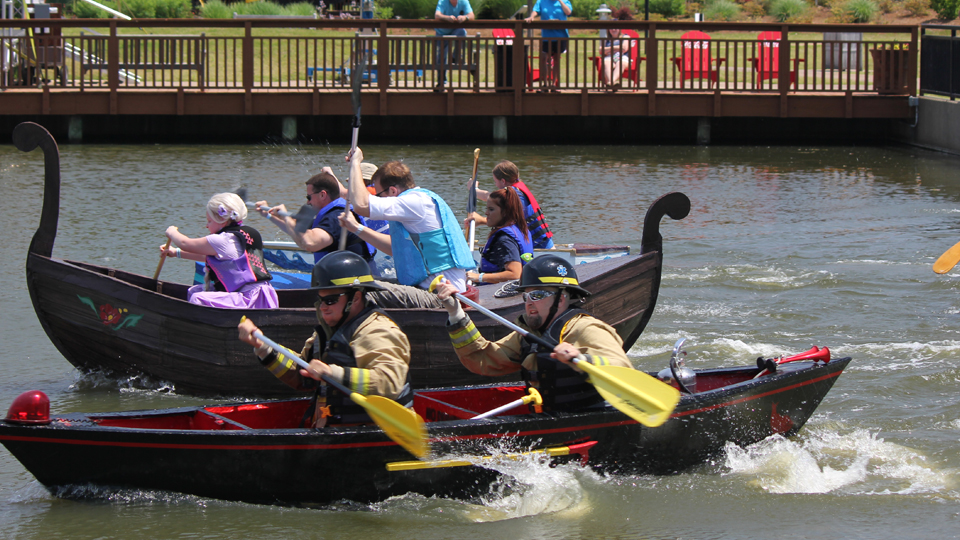The Do’s and Dont’s of Building Your Cardboard Boat For Cardboard Boat Regatta on May 11, 2024
March 5, 2020

Competing in the 2024 Cardboard Boat Regatta? But maybe you have no clue where to even begin with the fun project. Never fear, because Commodore John Watkins is here to give you some tips and tricks on how to build the best cardboard boat that will be the best on the water on race day.
ITEMS NEEDED AND RECOMMENDED FOR A SUCCESSFUL BUILD
- Undamaged cardboard. If you break it, crush it or cut through it, the cardboard may fail while in use. No-brainer: Don’t step on it.
- Water-based wood glue
- A paint roller. This will help to spread the glue over large surfaces and remove excess glue. Too much glue is not good for you!
- Clamps and weights. These will help press the glue joints and layers together. Be sure to use a large flat surface in between the clamp or weight and cardboard. This will protect the cardboard corrugations from damage.
- Silicon sealant. This will help keep your cardboard dry when it’s in the water! Remember to seal the ends of the cardboard with caulk or silicone, or you’ll have great fun watching the water draw up into the corrugations just like in a drinking straw.
- Paper tape/Reinforced paper tape. Paper tape helps join the pieces of cardboard and also works well over caulked edges and seams. This won’t shrink like duct tape when you paint it!
- Water-soluble outdoor latex-based primer. Try saying that five times fast! This is for your initial coats of paint. Avoid oil-based paints, stains, caulk, and glue because the oil soaks into the cardboard, which weakens and damages it. The cardboard may never dry!
TIPS WHEN BUILDING
- Try building a model first. Scale down your design and cut its “flat-pattern” shape out of a manila folder. Use stones or small weights to test the buoyancy. Tape together and seal it from the water using scotch tape. This could give you an idea if the boat will float the way you want.
- Layer cardboard. This will give you additional strength. Layer the cardboard with the corrugations going in different directions. This will make for a stronger laminate. You can have strength and still keep your boat light if you place the second layer so that the corrugations run at a 90-degree angle to the first layer.
- Fold your cardboard. To fold cardboard across the corrugations, consider scoring the line of the fold with the butt end of your utility knife or other rounded edge of a tool.
- Building location is important. Try to build the raft in a warm, dry, low humidity location. This will speed up the glue drying process. Be sure your boat will be able to get out the door of wherever you build it!
- Channel your inner Van Gogh. Remember to decorate your boat (highly rewarded by the judges on race day) and bring your own wooden paddles or oars.
BONUS TRICKS
- A flat bottom is recommended. A V-shaped bottom is likely to tip over unless the V is very gentle.
- The lowest center of gravity is the most stable. Kneeling or standing will cause you to tip over.
- Longer boats go faster, but they are harder to turn.
- Boats shorter than 10 feet are difficult to steer.
- For height, allow about 18 inches for you to sit and paddle effectively without the edge of your boat blocking your arms.
- Figure about 30 inches maximum for 1 person, 48 inches for two people.
- Clear tape melts when it is painted.
- Forget about “glue guns” because that type of glue melts on hot days.
- Fold a lot and cut sparingly.

